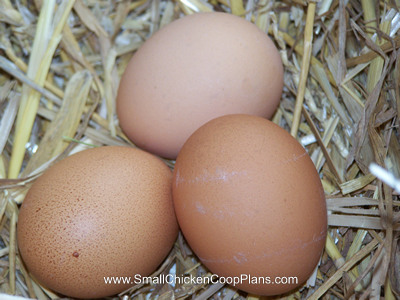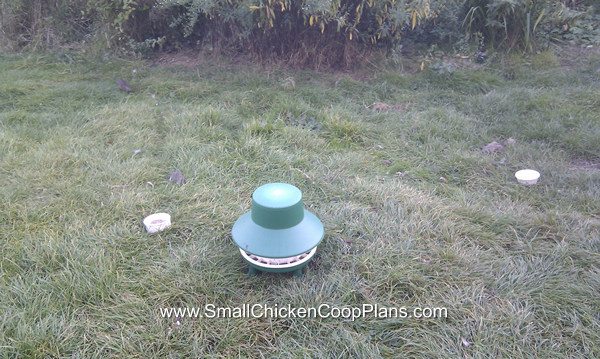In general terms chickens are fairly simple to raise. On the reality bites side of things it can be fairly horrifying to find them acting ill and not have a clue as to why, but the general rule of thumb of keeping them safely housed in a secure, comfortable, dry and draft-free coop with their area kept as sanitary as reasonably possible and fresh food and water available, is in fairness probably the basic requirements of every pet (or livestock animal) you will ever own.
And their benefits are well worth the effort required.

In many ways the smaller the coop the more potential work there is in keeping it sanitary for them, because all the mess they are making is in a condensed area and so would need cleaning more regularly.
That is why, more than ever, if you are planning to build your own coop you should be thinking of ways to make your life easier i.e. you need to be able to have easy access to collect the eggs and to keep your chickens comfortable.
If your chicken pen is low, you will be stooping for the whole time you are in there cleaning them or changing their feed and water etc.
Your chores will become such a hassle it will really zap a lot of the enjoyment out of keeping chickens.
One area that you should give particular attention to is obviously in the construction of the coop. Here are a few considerations :
Step 1
A chicken coop’s first design priority should be keeping the chickens safe from predators.
Chickens are vulnerable to many animals that can burrow, climb, jump and all around outsmart a shabbily built small chicken coop. Coops must protect from all these forms of attack by fully enclosing the chickens with solid fencing and overhead protection. Make sure the fence itself is made of the proper materials also or some animals will simply attack right through the fence (some can reach through large-holed wire, others can dig under or bite or bend their way in through a wire fence).
Step 2
Rats, though not usually predators of the chickens themselves are quick little thieves when it comes to fresh eggs (and chicks).
I used to be a lot more live and let live about it but rats have become the bain of my life.
They started by biting through the bottom corner of the first chicken coop I had (a small hutch and run combined). The house part was raised so them gnawing through the bottom corner was more annoying than dangerous but it really spoilt the look of my lovely little coop.
Then holes popped up all around the coop and run.
Potentially the damage rats might do to a coop could make it possible for predators to get in – even the rats themselves might nibble away at your chickens toes if they get the chance to.
Make sure all possible holes where rats can enter are well plugged. A good defense against rats is the use of solid flooring materials (I only had mine raised on concrete blocks – not good enough, they just stood on the blocks and nibbled their way through from there).
Having a fence that continued down several inches is what I wish I had done from the very beginning. I added buried wire around the run afterwards but they managed to get between it and the run so I had to bury another lot of wire from the inside of the run.
Apart from feeling a fool, I also put double the effort and expense into it but it does at least keep the rats from burrowing underneath and really should be done to protect against predators such as dogs and foxes anyway.
Any sign of rat infestation must be dealt with immediately, but remember that it’s easier to prevent them than it is to get rid of them later.

Step 3
Chicken coops should be warm to prompt hens to lay eggs. Any drafts, especially in cold weather, will make the hens uncomfortable and reduce their egg production. If you plan to raise chicks, warmth is critical and they will die if not kept at a proper temperature.
Step 4
Your coop needs some sort of roost for the hens to sleep upon. A few poles connected with boards will do the trick. Make sure the edges of the boards are slightly rounded so the chickens can better grasp them. You should plan for about 8 inches of roosting space for each adult hen. Intersperse nesting boxes among the roost to encourage the hens to lay eggs.
Step 5
Be sure to give your chickens sufficient room. More room means happier, healthier chickens that will lay more eggs. At least 3 square feet per chicken. Don’t forget to figure in room for water and feeds troughs as well.
These simple tips should be sufficient to get you started building the perfect small chicken coop for your birds. Do a good job and they will thank you for it in the form of lots of fresh eggs.
